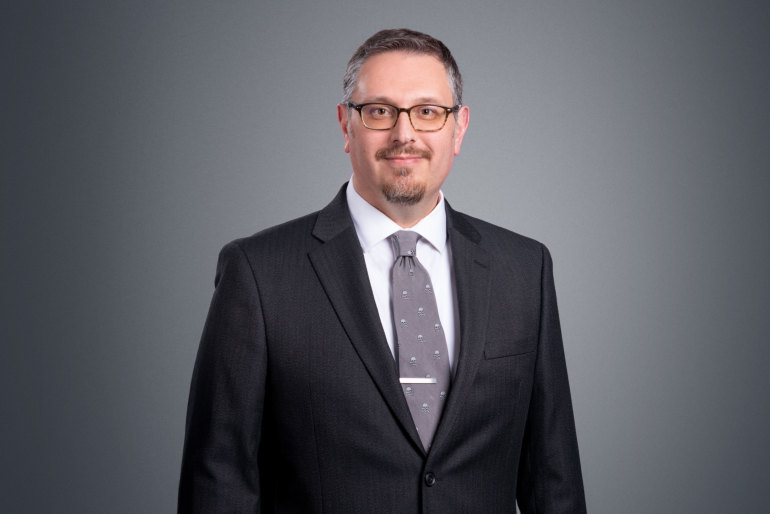News & Insights
Legal Alert

Recent Seventh and Ninth Circuit Cases Affect Federal Equity Receiverships
Litigation
2.01.12
The Securities and Exchange Commission, Federal Trade Commission, and Commodities Futures Trading Commission often seek appointment of receivers in civil enforcement actions, including in actions alleging operation of Ponzi-like investment schemes. Receivers are generally tasked with taking over entities used to perpetrate schemes, conducting forensic accountings, reporting their findings to the appointing court, and recovering funds, where possible, for distribution to defrauded investors. In the recent decisions described below, the Seventh and Ninth Circuit Courts of Appeal address three key issues that arise in federal equity receiverships -- the impact of a claims bar date, distribution priority between investors and creditors, and the limits on a receiver’s ability to recover from third parties who file bankruptcy.
CFTC v. Lake Shore Asset Management
In a recent decision by Judge Richard Posner, the Seventh Circuit Court of Appeals addressed two important issues that arise in many federal equity receiverships – allowance of late-filed claims and priority in distribution between investors and creditors.
In CFTC v. Lake Shore Asset Management Ltd., et al., 646 F.3d 401 (7th Cir. 2011), the court first addressed the appropriate standard for determining whether a late-filed claim should be allowed. Notice of the deadline to submit claims had been mailed to the investor, an Andorran bank, and the bank had failed to submit a claim. The district court disallowed the claim and the bank appealed.
The Seventh Circuit held that excusable neglect under Fed. R. Civ. Proc. 60(b)(1) is the appropriate standard for determining whether a claim should be allowed to be filed late. The court described excusable neglect as an "all-relevant circumstances" standard that balances the excuse of the claimant, the consequences to the claimant if relief is denied, and the consequences to the receivership estate if relief is granted.
The Seventh Circuit found that the bank's neglect in this instance was not excusable. Even if the proper person at the bank did not receive notice, the bank had actual knowledge of the case and the receiver's appointment, and made the incorrect assumption that it would receive distributions automatically without taking action. Although the consequences of disallowing the claim were substantial (i.e. no distributions from the receivership estate), the consequences to the receivership estate if relief was granted were also significant in that the receiver would have to recalculate distributions to all other investors, and the reduction in distributions would likely "stir a hornet's nest" of objections from other investors.
Note, although distributions were made before the appeal was decided, a reserve sufficient to cover the bank's pro rata distribution, should its claim be allowed, was maintained by the receiver. Had the bank not acted until after distributions had been made, the appeal might have been dismissed as moot.
The second issue in Lake Shore Asset Management involves the priority in distribution between investors and non-investor creditors. An entity identified as GAMAG contended that it was not an investor, but a non-investor creditor due to the nature of its relationship with the receivership entities, and therefore was entitled to priority over investors. The Seventh Circuit found that there was no meaningful difference between Lake Shore's relationships with GAMAG and with other investors. Accordingly, it affirmed the district court's denial of GAMAG's request for priority.
More interesting than the result, however, is that the Seventh Circuit apparently agreed in dicta that if GAMAG had properly been deemed a creditor, it would have been entitled to priority. The court stated that "creditors are usually paid ahead of shareholders in insolvency proceedings, whether the proceedings take the form of bankruptcy or of receivership." Id. at 407 (citations omitted). The court explained that the priority creditors enjoy over investors "mirrors the contractual allocation of risk and reward" for the success of the business. Id. at 408.
The decision likens receiverships to bankruptcy cases in several places. Id. at 404, 405 and 408. Other courts have drawn the same comparison, but many also note that there are significant differences. Some courts have local rules that address the issue. See Central District of California, Local Rule 66-8 (providing that receiverships should be administered in accordance with bankruptcy practice).
The Seventh Circuit could have simply rejected the argument that GAMAG was a creditor and affirmed on that basis. Instead, the decision indicates that the priority scheme in bankruptcy should apply and a distribution plan should not be approved unless non-investor creditors are given priority over investors. This would be a significant change in equity receivership law, which for many years has left the issue of distribution priority among investors and non-investor creditors to the district court's broad discretion to achieve equity under the unique circumstances of each case.
Read the full text of the CFTC v. Lake Shore Asset Management decision.
Sherman v. SEC (In re Sherman)
The Ninth Circuit Court of Appeals recently addressed the scope of section 523(a)(19) of the Bankruptcy Code, which excepts from discharge debts for the violation of federal or state securities laws, or common law fraud in connection with the purchase or sale of security. The panel held that amounts an attorney was ordered to disgorge in connection with an SEC enforcement action were not excepted from his bankruptcy discharge. The attorney had represented securities laws violators, but had not himself violated securities laws.
In 1997, the SEC instituted an enforcement action against several companies, which, among other things, led to the appointment of a receiver. Attorney Richard Sherman represented some of the defendants in the enforcement action. The receiver obtained orders directing Sherman to disgorge funds which had been determined to be ill-gotten gains, some of which Sherman had withdrawn from his trust account and some of which he received in a contingency case. The SEC conceded that Sherman had not committed any securities violations himself.
Four days before the hearing on the disgorgement motion, Sherman and his wife filed a petition for Chapter 7 bankruptcy. The Shermans were later granted a discharge. In a subsequent adversary proceeding, Sherman sought a declaration that his obligation to disgorge funds had been discharged notwithstanding section 523(a)(19). The bankruptcy court granted summary judgment in favor of Sherman. It concluded that the disgorgement order did not arise from a violation of securities laws. It further ruled that "[s]ection 523(a)(19) was intended to apply to 'wrongdoers' and not to persons who are simply found to owe a debt which the SEC is authorized to enforce."
The SEC appealed to the district court, which reversed. The district court adopted a broader interpretation of section 523(a)(19), treating as paramount the Sarbanes-Oxley Act's goal of "protect[ing] investors by improving accuracy and reliability of corporate disclosures made pursuant to the securities laws." It expressed particular concern that "[r]eading a limitation into the SEC's ability to enforce its powers to obtain disgorgement of ill-gotten funds in an appropriate case … would frustrate the ability of the SEC to enforce the federal securities laws." Sherman appealed.
While affirming the general proposition that ill-gotten gains may be disgorged from innocent third parties, the Ninth Circuit agreed with the bankruptcy court, holding that section 523(a)(19) prevents the discharge of debts for securities-related wrongdoings only in cases where the debtor is responsible for the wrongdoing. In reaching its conclusion, the Ninth Circuit emphasized the goals of the Bankruptcy Code, including granting debtors a "fresh start", and the Supreme Court's rule of construing discharge exceptions narrowly. As a result, the Court said, "in cases … where neither party claims the debtor is responsible for any securities-related wrongdoing … the debtor must be treated like an 'innocent' for the purposes of [section] 523(a)(19)." Judge Fisher issued a spirited dissent, arguing that the funds at issue were the product of securities fraud, merely held in trust by Sherman, and that, therefore, section 523(a)(19) should apply. Judge Fisher emphasized the central role disgorgement plays in enforcing securities laws.
Section 523(a)(19) was added to the Bankruptcy Code in 2002, and few appellate courts have addressed this issue. Given the relative absence of significant decisions on the issue, it is too early to tell whether the Sherman decision will notably impact section 523(a)(19) jurisprudence. Notably, the Ninth Circuit's opinion does not affect alternative methods of pursuing disgorgement. Rather, it merely limits the application of section 523(a)(19) to situations where the debtor has violated securities laws. Both the Sherman opinion and Judge Fisher's dissent suggest that a different tactic - constructive trust for instance (assuming the funds could be traced) – might have yielded a different result. Nonetheless, it will be interesting to see whether other circuits follow the Ninth Circuit's majority opinion or Judge Fisher's dissent.
Authors
Partner
Partner
RELATED INDUSTRIES
Allen Matkins Leck Gamble Mallory & Natsis LLP. All Rights Reserved.
This publication is made available by Allen Matkins Leck Gamble Mallory & Natsis LLP for educational purposes only to convey general information and a general understanding of the law, not to provide specific legal advice. By using this website you acknowledge there is no attorney client relationship between you and Allen Matkins Leck Gamble Mallory & Natsis LLP. This publication should not be used as a substitute for competent legal advice from a licensed professional attorney applied to your circumstances. Attorney advertising. Prior results do not guarantee a similar outcome. Full Disclaimer



